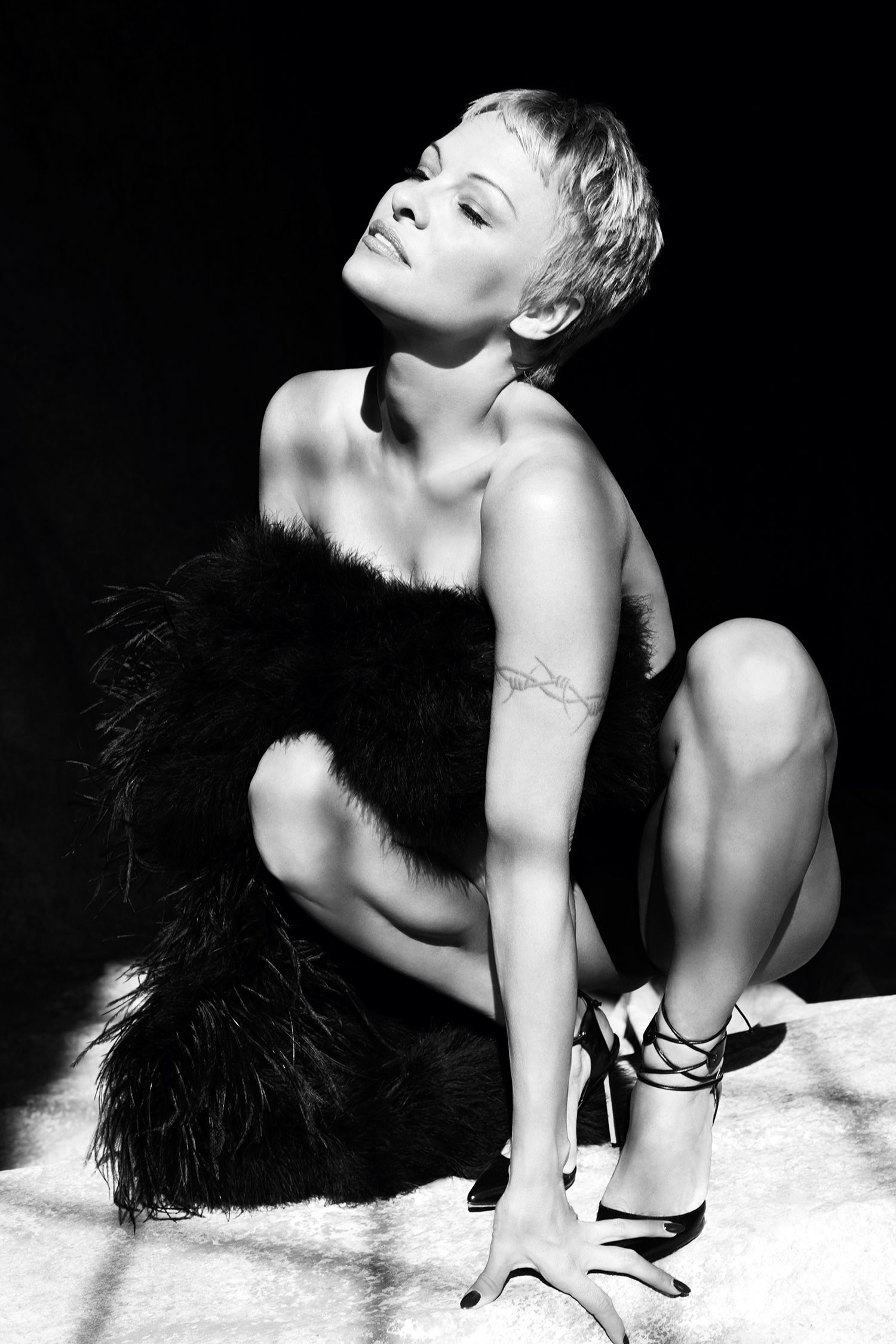Purple Magazine
— S/S 2014 issue 21
Pamela Anderson
 Lara heels MANOLO BLAHNIK
Lara heels MANOLO BLAHNIK
the new Pamela Anderson
interview and photography by SANTE D’ORAZIO
SANTE D’ORAZIO — I love your new short haircut. What made you go for it?
PAMELA ANDERSON — I like to be bold. It wasn’t planned. I’d worked with Deborah Anderson; they shot me in short, dark wigs. The make-up artist Autumn Moultrie told me I should shave my head — show my face more. I had the NY marathon for Haiti coming up and thought, hmmm, this might be practical. I told Paul Desmarre of Christophe Salon Beverly Hills to come to my house later and cut it. Three hours later and voila! I love the movie Breathless by Jean Luc-Godard with Jean Seberg. It seemed like a good idea. Fresh, European. I’ve never been into hair extensions. I have so much hair. But it seems American women like…